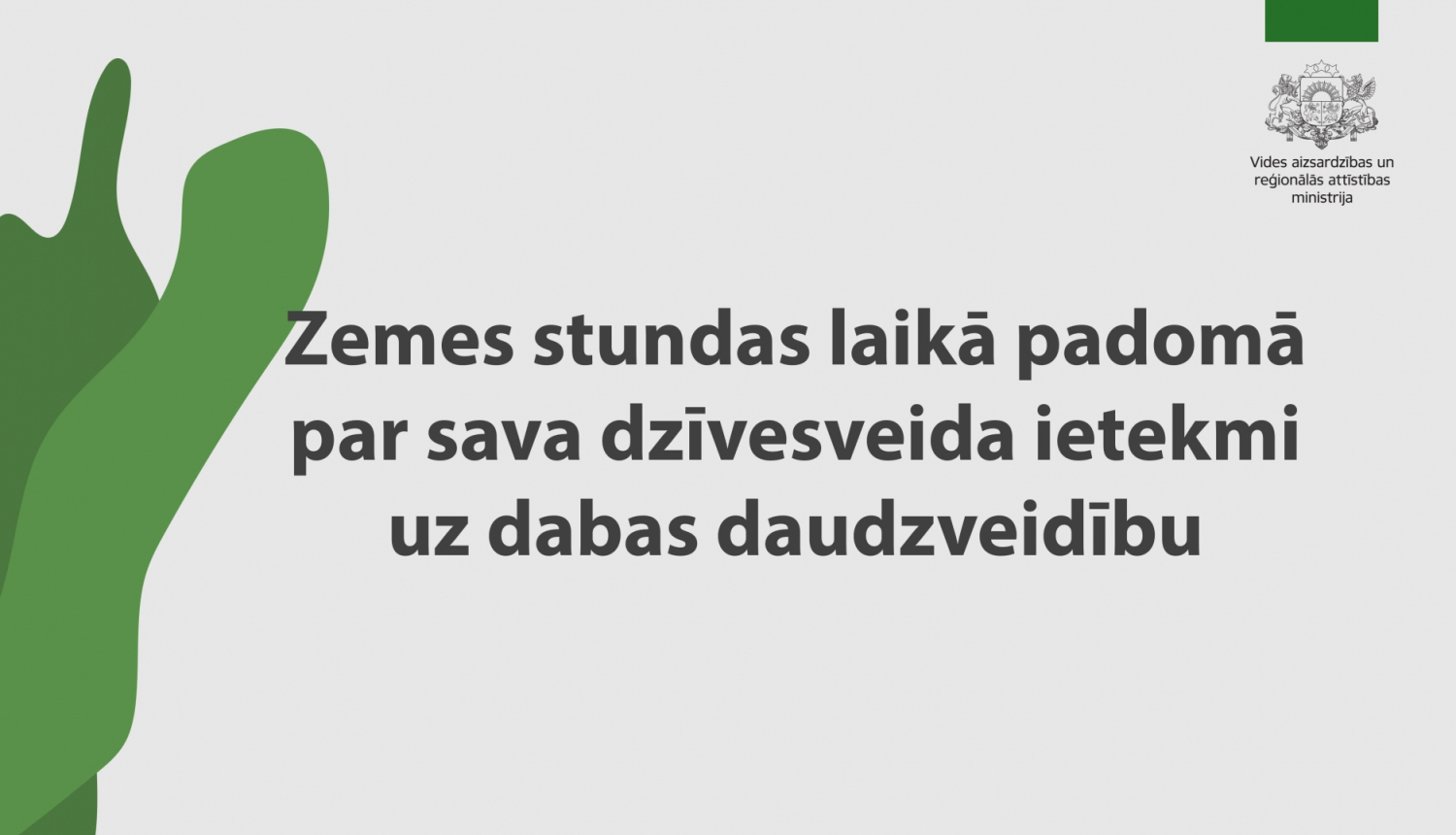The Ministry of Environmental Protection and Regional Development (VARAM) calls for each hours of Earth to assess, within the framework of the share, how any action has an indirect impact on nature and natural processes, and to have an impact on species and their habitats.
This year, the main theme of Earth Hour is the disappearance of natural diversity and the associated consequences. In order to stop the loss of biodiversity, it is not only natural friendly work in forests and fields, but also, when making daily choices, how they affect nature. The Council, which will help to reduce climate change, will also preserve biodiversity:
Don't throw away food! Try to plan carefully to buy groceries or use what it is, cook a new meal.
Move More with Foot or Wheel! The use of fossil fuels contributes to climate change, which also threatens species that are unable to adapt in good time. Similarly, air is polluted and the water ecosystem is also contaminated when substances are washed out.
No alien species and invasive species are planted on the balcony or in low rumor! Try to plant local species as well as vegetables and herbs!
- Invasive species are made undesirable and dangerous by the fact that they most often do not have natural competitors or enemies that could control their distribution, leading to invasive species becoming dominant in the environment, depressing local species and spreading unimpeded in ever-expanding areas.
- Recognize Invasive Species! Biodiversity is also reduced by invasive species.
- flower blasting (Impatiens glandulifera);
Flower blasts form large and dense stands in humid places near rivers and lakes, where local plants are rented. In the forests they overcome the new trees and slow the recovery of the forest, migrate on average 2-5 km a year. Get it out and pick it up!
- Solidago canadensis (Canadian);
Canada's gold-rock growth is growing in very different places, more often in cities, less outside them. It forms dense stands, and the local species disappear completely. Get it out and pick it up!
- Spanish kayaken (Arion lusitanicus)
The Spanish kayaken lives in humid places in forests, rivers and lakes, meadows, parks and gardens. It eats plants and is transmitted by plant sickness. Try to limit their distribution.
- Manage your property in a natural friendly way!
Repair, donate, or give! Before you throw a case, think about it, maybe you can give it a second life, fix it, donate it, or give it to someone who would use it! The production of every case consumes natural resources. . Shopping less, but responsible, think about whether the purchase is really necessary and whether it will take a long time ?
Toxic chemicals and electrical equipment shall only be placed in a suitable place! Can I fix the electrical equipment? Does it work well yet, but you don't need it? Do it! Landfill sites and sites reach tonnes of computers, monitors, printers that pollute the environment every year.
This year Earth Hour will take place on March 27 at 20.30 – excludes or minimizes lighting in your household for an hour!
Information prepared by:
Public Relations Department
Ministry for Environmental Protection and Regional Development
20200305; 67026533,
e-mail: prese@varam.gov.lv
www.varam.gov.lv
